Sanguis Draconis, Dragon’s Blood, Xue Jie 血竭Xue Jie (TCM)Damm ul Akhwain (Unani) Raktaniryaas, Khoon-kharaba (Daemonorops draco, Ayurveda) Khoonkharaba, Heeradokhi (Dracaena cinnabari, Ayurveda) |

|
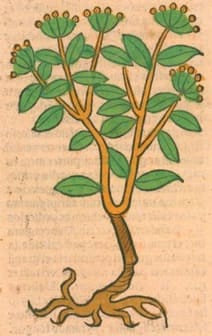 Sanguis Draconis
Sanguis DraconisOrtus Sanitatis, Meydenbach, 1491
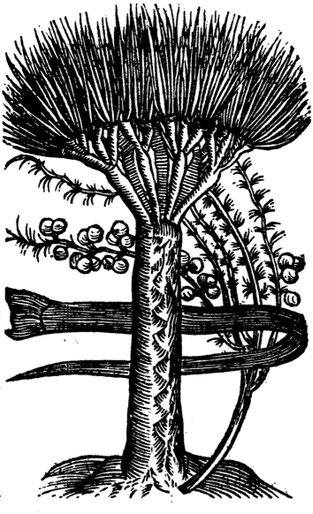
|
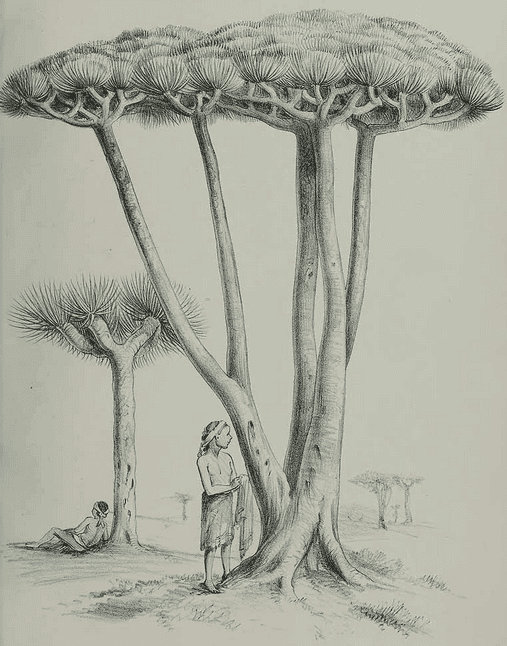
|
|
Traditional source of Dragon’s Blood according to Parkinson, Theatrum Botanicum, 1640 |
Dracaena cinnabari Balfour, I.B., Botany of Socotra, 1888 |
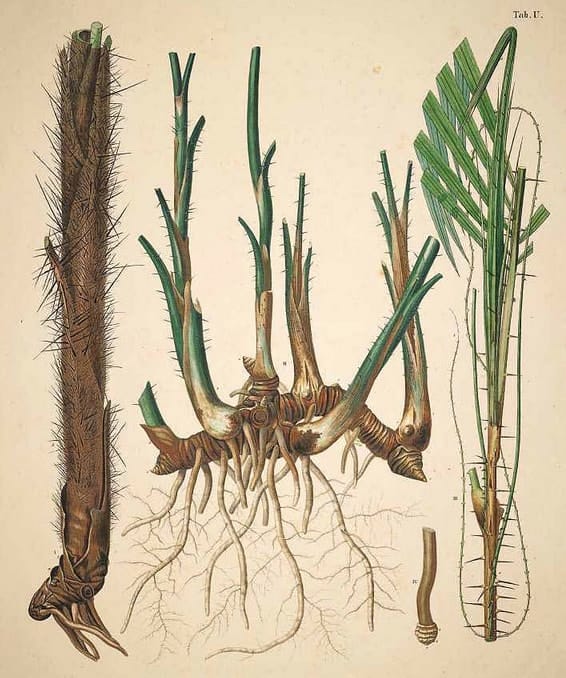 Daemonorops draco (syn. Calamus draco)
Daemonorops draco (syn. Calamus draco)Martius, C.F.P. von, Historia Naturalis Palmarum, 1826 |
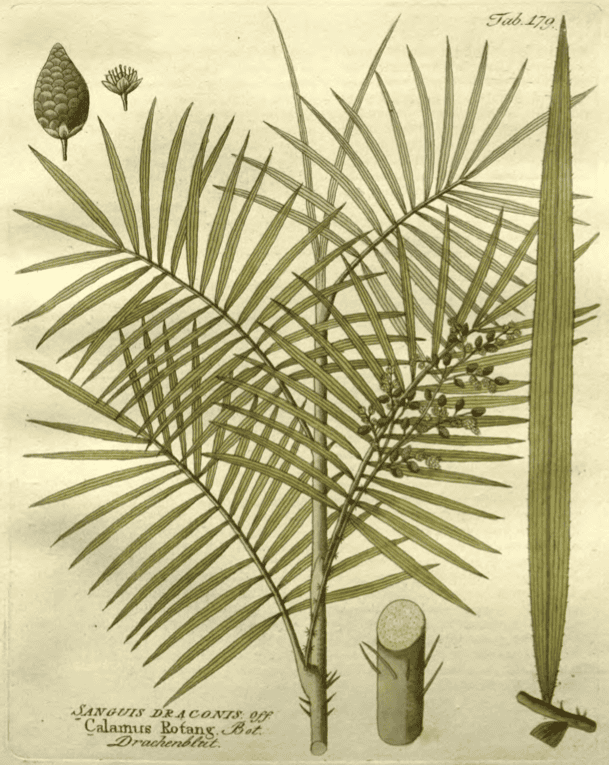 Calamus rotang
Calamus rotangIcones Plantarum Medcio-oeconomico, Vietz, 1804 |
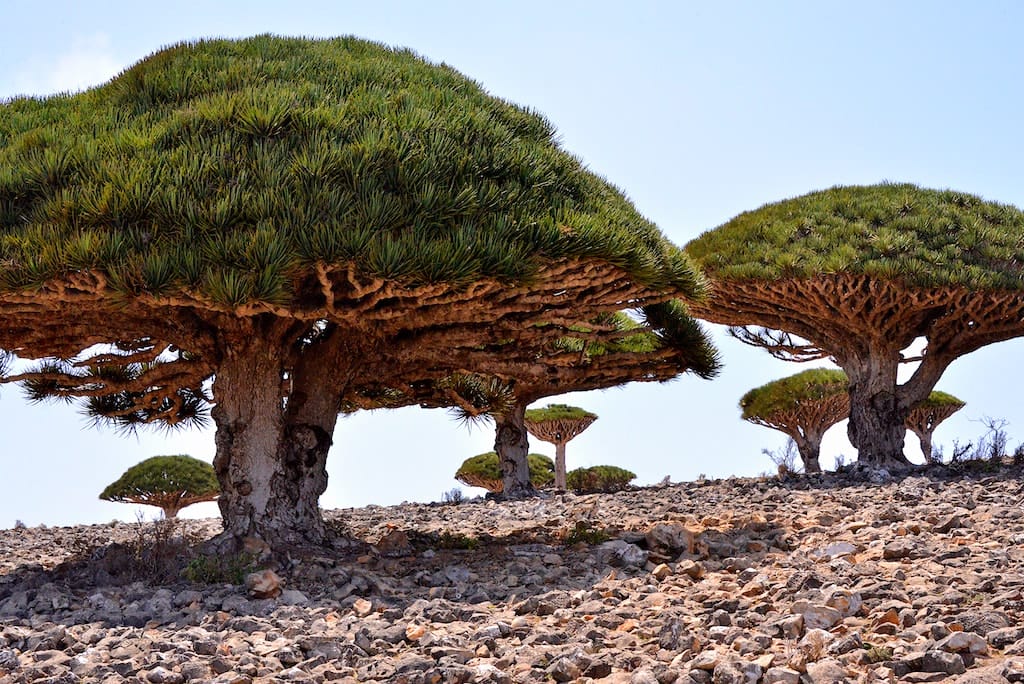 Dracaena cinnabari, the original source of ‘Dragon’s Blood’ on Socotra Island, Yemen
Dracaena cinnabari, the original source of ‘Dragon’s Blood’ on Socotra Island, Yemen(Photo by Rod Waddington) (Wikimedia)
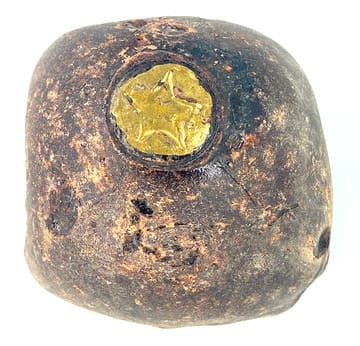 A ball of Dragon’s Blood with a Gold Star Seal
A ball of Dragon’s Blood with a Gold Star Seal(Adam, 2022) |
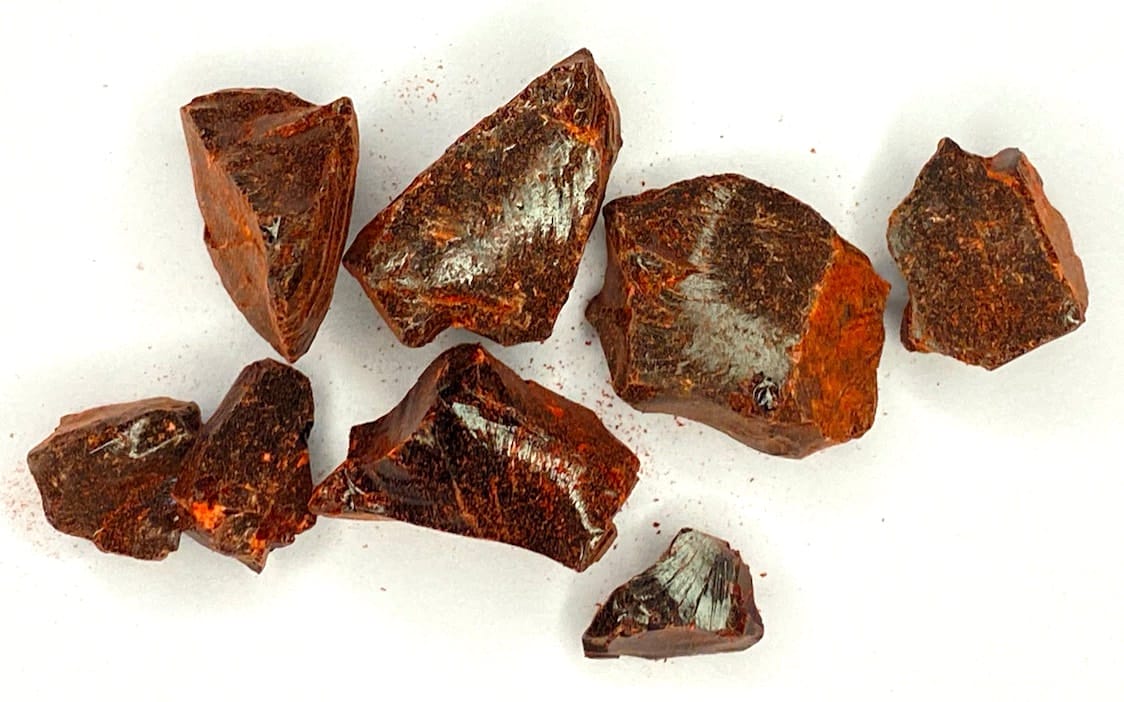 High quality Dragon’s Blood resin from China
High quality Dragon’s Blood resin from China(Adam, 2024) |
Botanical name:
Daemonorops spp.
The traditional source was Dracaena cinnabari (Convallariaceae) found on the Island of Socotra (Yemen) but is largely unavailable today.
A number of species have supplied the market:
- D. draco (syn. Calamus draco, D. adscendens);
- D. didynophyllos
- D. micranthus
- D. propingus (Malaya)
- D. draconcellus (Borneo)
- D. terminalis yields the Chinese Dragons Blood.
- the fruit of Calamus rotang (of the East Indies)
- the trunk of Pterocarpus draco,
- Pterocarpus santalinus
- Dracaena draco (Canary Islands)
- Dalbergia monetaria,
- several species of Croton.
Parts used:
Gum-resin
Several types were distinguished:
- Sanguis Draconis in Granis: grains of Dragons Blood
- Sanguis Draconis in lacrymis: ovoid masses, the size of Hazel nuts strung together
- Sangui Draconis in placentis: flat masses or cakes, an inch thick, weighing several ounces.
- Sanguis Draconis in tabulis: in plates 6 or 8 inches long, 3 or 4 inches broad and more than an inch thick.
Temperature & Taste:
Cool, dry. Sweet, Salty.
“It is not exclusively hot. Some physicians consider it to be Cold with Dryness in the second degree”. (Avicenna)
Classifications:
2G. CLEANSING. 2N. REPELLENTS. 2O. ASTRINGENT. 2P. HEMOSTATIC. 2T. GLUTINATE. 2X. INCARNATIVE. 2Z. CICATRIZING
4e. STOMACHIC
TCM:
T. External Medicines
Uses:
1. Moves the Blood, Clears Stasis, Eases Pain (West, TCM, Unani):
-pain related to blood stagnation or internal bruising as seen in Trauma, Fractures, Sprains, or from other causes.
-“dissolves blood stasis, relieves pain” (TCM, Tang Ben Cao)
-“good for treating physical injury and fracture” (TCM, Li Xun)
-used internally and externally for this purpose
2. Stops Bleeding, Benefits the Blood (West, TCM, Unani):
-In Europe, it was taken for Diarrhea and Dysentery, especially with Blood;
-Spitting of Blood, excess Menstruation
-considered specific for all types of Bleeding in Unani
-applied externally to stop bleeding from wounds.
-“It causes constipation and stops bleeding”. (Avicenna)
-“It is a wonder drug in harmonizing the blood” (TCM, Liu Wansu)
-“tonifies the deficient condition of Blood … It reinforces Yang Jing (Essence) (TCM, Wang Haogu)
3. Strengthens the Stomach:
-“It strengthens the Stomach”. (Avicenna)
–”good for treating sudden onset of epigastric and abdominal pain” (TCM, Tang Ben Cao)
-“treats Abdominal Pain of a woman due to disorder of blood and qi”. (TCM, Li Shi Zhen)
-this effect is in small doses when combined with suitable medicines.
4. Externally:
-topically as a powder to stop Bleeding
-applied in plasters to Bruising, Trauma, Blood-stagnation with fixed pain
-“Dragon’s blood heals fresh Ulcers and Wounds”. (Avicenna)
-powder is applied to chronic non-healing Wounds and Ulcers to help protect, prevent decay and aid healing. (TCM, West)
-“good to apply powder of the drug onto all kinds of Tinea, Scabies and Malignant Sores that do not heal after a long time” (TCM, Da Ming)
-fastens loose Teeth
-more recently, it has been used for its anti-fungal effect.
Dose
In Pills or Powder: 500mg–3 grams
It is best taken with Wine to move the Blood, resolves Blood Stasis, and relieve pain. This was noted by Eastern and Western sources.
Comment:
1. In Unani it is regarded as similar to Catechu, but weaker. Catechu is a stronger astringent, Dragon’s Blood is better for the Blood.
2. One famous TCM author stated that Myrrh and Frankincense (together) function on the Qi and Blood system, whereas Dragon’s Blood only functions on the Blood system. However, if combined with Frankincense it will work on both Qi and Blood.
Correctives:
1. Tragacanth, Gum Arabic (Unani)
2. Mastic
Substitutes:
1. Hematite
2. Wild Lettuce extract (Unani)
3. Catechu
4. Red Sandalwood
Main Combinations:
1. Trauma, Bruising:
i. Dragon’s Blood with Myrrh, Frankincense, Saffron (as in Powder to Move Blood)
ii. Dragon’s Blood with Myrrh, dried Goat Blood, Crab Eyes, Red Earth, Nutmeg (as in Powder for Those Hurt by a Fall of Zwelfer)
iii. Dragon’s Blood with Frankincense, Myrrh, Safflower, Catechu, Borneol (as in Qi Li San of TCM)
iv. Dragon’s Blood with Sealed Earth, Rhubarb
v. Dragon’s Blood with Comfrey, Cardamon, Hematite, Red Coral (as in Powder to Break Blood Above and Below of Nicholas)
vi. Dragon’s Blood with Rhubarb, Shilajit, Madder, Armenian Earth, Dragon’s Blood, Pomegranate flower, Comfrey (as in Powder for Bruising)
vii. Dragon’s Blood with Myrtle berries, Wild Pomegranate, Armenian Earth, Mastic, Olibanum (equal parts) (Pharmacopoeia Sardoa, 1773)
viii. Trauma, Bruising, Lumbar strain, Tendon pain, Dragon’s Blood with Clove, Dang Gui, Rhubarb (Da Huang), Costus (Mu Xiang), Safflower (Hong Hua), Olibanum (Ru Xiang), Myrrh (Mo Yao), Licorice (as in Zhi Tong Zi Jin Wan)
2. To stop Bleeding:
i. Dragon’s Blood with Red Earth, Red Coral, Amber, Mastic, Cinnamon and Nutmeg (as in Astringent Pills)
ii. Dragon’s Blood with Red Earth, Hematite, Mastic, Gum Arabic (as in Styptic Powder)
iii. Dragon’s Blood with Hematite, Amber, Dragons Blood, Red Coral, Alum, Pomegranate flower, Armenian Earth (as in Powder to Suppress Hemorrhage of Unani)
iv. Menorrhagia: Dragons Blood, Gum Arabic, Red Earth, Talcum, Pearl (equal parts). Proven effective in young girls with menorrhagia, given in 3 gram doses from first day of cycle until menstruation ceases (Safoof Habisuddam, ‘Powder to Stop Bleeding’ of Unani) .
3. Kidney and Bladder Ulcers:
i. Dragon’s Blood with Tragacanth, Gum Arabic, Red Coral, Red Earth, Mastic, Melon seed, Winter Cherry, Marshmallow (as in Pills for Kidney and Bladder Ulcers)
ii. Dragon’s Blood with Winter Cherry, Almond, Cucumber seed, Melon seed, Rose, Tabasheer, Red Earth, Gum Arabic, Poppy seed (as in Troches of Winter Cherry)
4. Non-healing Wounds and Ulcers, Dragon’s Blood with Catechu and Frankincense, topically as a powder (TCM)
5. Heat of the Eyes, Dragon’s Blood with Red Earth, Mastic, Roses, made into a paste with Egg white, Vinegar and Rose water, apply to temples and forehead.
6. As an ointment for Hemorrhoids, Dragon’s Blood with Red Earth, Mastic, Myrrh, Orange peel, Orris root (as in Ointment for Hemorrhoids)
Major Formulas:
Powder for Hemoptysis (Galen)
Powder to Break Blood Above and Below (Nicholas)
Powder to Move Blood (Wirtzung)
Powder of Amber (Unani)
Powder for Excess Menstruation (Serapion)
‘Powder for those Hurt by a Fall’
Powder for Trauma
Pills for many Diseases of the Body
Trauma Powder
Troches of Gordon (Trochisci Gordonii)
Troches of Red Coral (Samarqandi)
Astringent Pills
Tincture for Blood Stagnation
Qi Li San (TCM)
Zhen Xiang Jiao Nag (Precious Aromatic Capsules) (TCM)
Die Da Wan
Cautions:
1. Not used during Pregnancy
2. Not used in marked weakness
3. Long-term use harms the Kidneys according to Unani.
Toxicity:
–Acute and sub-acute oral toxicity of Dracaena cinnabari resin methanol extract in rats.
Main Preparations used:
Purified Gum, Tincture
1. Tincture:
i. Powdered Dragons Blood (2 oz.), Alcohol (1 pound). Digest 3 days in a gentle heat, filter.
Dose: 1 scruple–½ dram.
-
Extra Info
-
History
-
Varieties
-
Research
|
‘The substance which is mentioned by Dioscorides under the name of [?], as a costly pigment and medicine brought from Africa, and which is also described by Pliny who distinguished it from minium, was certainly the resin called Dragon’s Blood. It was not however that of the Rotang Palm, Calamus Draco, or even of any tree of the Indian Archipelago, but was on the contrary a production of the island of Socotra. Dragon’s blood is, we believe, not named by any of the earlier voyagers to the India islands. Ibn Batuta, who visited both Java and Sumatra between A.D. 1325 and 1349, and notices their producing benzoin, cloves, camphor, and aloes-wood, is silent about dragon’s blood. Barbosa, whose intelligent narrative (A.D. 1514) of the East Indies is full of reference to the trade and productions of the different localities he visited, states that aloes and dragon’s blood are produced in Socotra, but makes no mention of the latter commodity as found at Malacca, Java, Sumatra, or Borneo. The fact we wish to prove is corroborated by the accounts of early commercial intercourse between the Chinese and Arabs recently published by |
Bretschneider. From the 10th to the 15th century there was carried on between these nations a trade, the objects of which were not only the productions of the Arabian Gulf and countries further north, but also those of the Indian Archipelago. One of the islands with which the Arabs and Persians carried on a great commerce was Sumatra, whence they obtained the precious camphor so much valued by the Chinese, but not, so far as it appears, the resin dragon’s blood. As to the productions brought from Arabia they are enumerated as Ostriches, Olibanum, Liquid Storax, Myrrh, and Dragon’s Blood, besides a few other articles not yet determined. It is worthy of remark that the Chinese are still the principal consumers of dragon’s blood, though like the rest of mankind they have to content themselves with the plentiful drug of Sumatra and Borneo, instead of the more ancient sort produced in Socotra. The first clear account of the production of the resin in India is that given by Rumphius, who in his Herbarium Amboinense describes the process by which it is collected at Palembang.’ (Pharmacographia, Fluckiger & Hanbury, 1879) |
|
Dragon’s Blood of Socotra—We have already stated that the Cinnabar mentioned by Dioscorides was brought from Africa. That the term really designated dragon’s blood seems evident from the fact that the author of the Periplus of the Erythrean Sea, written circa A.D. 54-68, names it [?] as a production of the island of Dioscorida, the ancient name of Socotra. The Arabians, as Abu Hanifa and Ibn Baytar, describe dragon’s blood as brought from Socotra, giving to the drug the very name by which itis known to the Arabs at the present day, namely, Dam-ul-ukh-wain. Barbosa (1514) as well as Giovanni di Barros mention it as a production of the island; and in our own times it has been noticed by Wellstead, Vaughan, and A. von Kremer. It is now but little collected. Vaughan states, as well as Von Wrede, that the tree is found in Hadramaut and on the east coast of Africa. The latter statement is also made in letters (1877, 1878), with which we were favoured by Captain Hunter of Aden and Hildebrandt of Berlin, by the latter of whom we were presented with a photographic sketch of the tree growing in the Somali country, at elevations of from 2500 to 5500 feet, and called there Moli. It is Dracaena schizantha Baker, a tree attaining 8 metres in height. The resin has an acidulous taste, and is, according to Hildebrandt, not exported, but occasionally eaten by the Somalis. The tree from which dragon’s blood is collected in Socotrais, according to Capt. Hunter, Draccena Ombet Kotschy. The Drop Dragon’s Blood, of which small parcels imported from Bombay or Zanzibar occasionally appear in the London market, is however this drug. |
It is in small tears and fragments, seldom exceeding an inch in length, has a clean glassy fracture, and in thin pieces is transparent and of a splendid ruby colour. From Sumatran dragon’s blood it may be distinguished by not containing the little shell-like scales constantly present in that drug, and by not evolving when heated on the point of a knife the irritating fumes of benzoic acid. Dragon’s Blood of the Canary Islands—This substance is afforded by Dracaena Draco L., a liliaceous tree resembling a Yucca, of which the famous specimen at Orotava in Teneriffe has often been described on account of its gigantic dimensions and venerable age. On the exploration of Madeira and Porto Santo in the 1oth century, dragon’s blood was one of the valued productions collected by the voyagers, and is named as such by Alvisedacada Mosto in 1454. It is also mentioned by the German physician Hieronymus Miinzer, who visited Lisbon about 1494. The tree yields the resin after incisions are made in its stem; but so far as we know the exudation has never formed a regular and ordinary article of commerce with Europe. It has been found in the sepulchral caves of the aboriginal inhabitants. The name Dragon’s Blood has also been applied to an exudation obtained from the West Indian Pterocarpus Draco L., and to that of Croton Draco Schlecht; but the latter appears to be of the nature of kino, and neither substance is met with in European commerce.’ (Pharmacographia, Fluckiger & Hanbury, 1879) |
